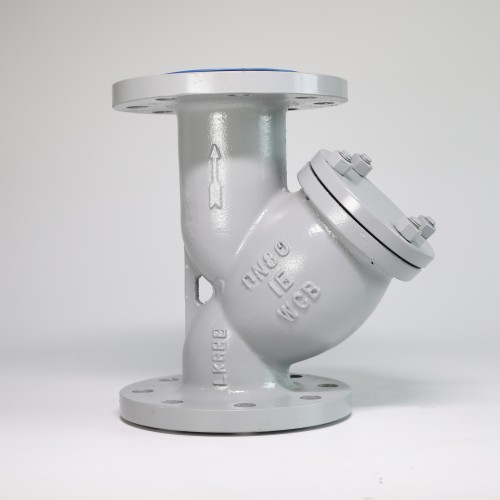rubber flexible joint
Understanding Rubber Flexible Joints A Comprehensive Overview
Rubber flexible joints play a crucial role in various industries, providing vital connections that accommodate movement and absorb vibrations and shocks. As essential components in piping systems, they help to maintain the integrity and efficiency of fluid transport systems. This article delves into the significance, applications, and advantages of rubber flexible joints.
What Are Rubber Flexible Joints?
Rubber flexible joints, often referred to as expansion joints or flexible hoses, are devices made from elastomeric materials designed to absorb vibrations, accommodate thermal expansion, or compensate for misalignments between connected pipes. They are constructed from rubber or elastomer compounds and can be reinforced with fabric or steel wire to enhance durability and performance.
These joints are available in various shapes and sizes, tailored to specific applications. They can handle a range of pressures and temperatures, making them suitable for diverse environments, including water, sewage, chemicals, and food processing.
Key Benefits of Rubber Flexible Joints
1. Vibration Absorption One of the primary functions of rubber flexible joints is to absorb vibrations generated by pumps and other machinery. This characteristic extends the life of the piping system and connected equipment by reducing the wear and tear caused by vibration.
2. Thermal Expansion Compensation As temperatures change, materials expand and contract. Rubber flexible joints effectively accommodate these movements, preventing stress and damage to pipes and fittings.
3. Noise Reduction The elasticity of rubber helps to dampen sound waves generated by the flow of liquids or gases, leading to quieter operations in industrial settings.
4. Misalignment Compensation In many installations, pipes may not align perfectly due to various factors, including ground movement or settling. Rubber flexible joints can absorb these misalignments, maintaining system integrity.
5. Easy Installation These joints are often lightweight and easy to handle, simplifying installation processes. They can be connected using flanges, clamps, or threaded ends, allowing for quick and efficient setups.
Applications of Rubber Flexible Joints
Rubber flexible joints find applications in a wide range of industries, including
rubber flexible joint

- Water and Wastewater Treatment Used to connect pipe sections in treatment plants, these joints can absorb vibrations and accommodate movements caused by shifting earth or thermal expansion.
- HVAC Systems In heating, ventilation, and air conditioning systems, rubber flexible joints ensure that there is no undue stress on ductwork due to thermal expansion and contraction.
- Chemical Processing They are employed in chemical plants to facilitate the movement of various substances while preventing leaks and accommodating movement.
- Food and Beverage Industry Specialized food-grade rubber flexible joints are used to maintain hygienic conditions while handling liquids and gases, ensuring compliance with health standards.
- Marine Applications In ships and offshore platforms, these joints are vital for the safe transport of fluids while absorbing vibrations caused by machinery and wave action.
Choosing the Right Rubber Flexible Joint
When selecting a rubber flexible joint, several factors should be considered
1. Material Compatibility Ensure that the rubber compound is compatible with the fluids being transported. For example, some rubber materials are resistant to oils or chemicals, while others are specifically designed for food-grade applications.
2. Pressure and Temperature Ratings Consider the operating pressure and temperature of the system. Each joint has specific ratings that must be adhered to for safety and performance.
3. Size and Configuration The dimensions and design of the joint should match the pipe system layout to ensure effective functionality without leaks.
4. Installation Requirements Assess the installation process to determine if specific fittings or tools are necessary.
5. Maintenance Considerations While rubber flexible joints generally require minimal maintenance, periodic inspections can help identify wear or damage before they lead to system failures.
Conclusion
Rubber flexible joints are indispensable elements in modern piping systems, offering flexibility, durability, and performance across various applications. By absorbing vibrations, accommodating thermal expansion, and compensating for misalignments, these joints significantly enhance the efficiency and longevity of industrial processes. As technology advances and industries evolve, the role of rubber flexible joints will continue to expand, further solidifying their importance in fluid transport systems. Understanding their functionality and applications can help engineers and technicians make informed decisions to optimize system performance.
-
The Key to Fluid Control: Exploring the Advantages of Ball Valves in Industrial SystemsNewsJul.09,2025
-
The Versatile World of 1, 2, and 3 Piece Ball ValvesNewsJul.09,2025
-
Stainless Steel Ball Valves: The Ideal Choice for Efficient Flow ControlNewsJul.09,2025
-
Optimizing Fluid Control with Ball Float ValvesNewsJul.09,2025
-
Manual Gate Valves: Essential for Control and EfficiencyNewsJul.09,2025
-
Everything You Need to Know About Butterfly ValvesNewsJul.09,2025
-
The Versatility of Wafer Type Butterfly ValvesNewsJul.08,2025




